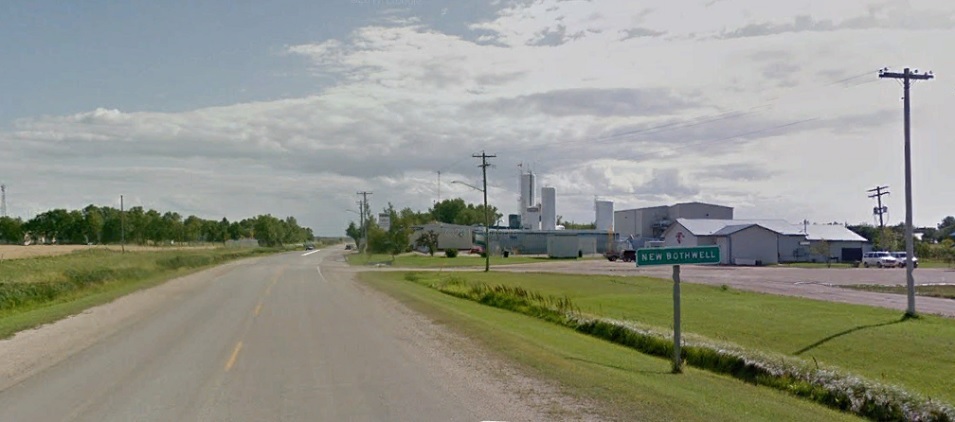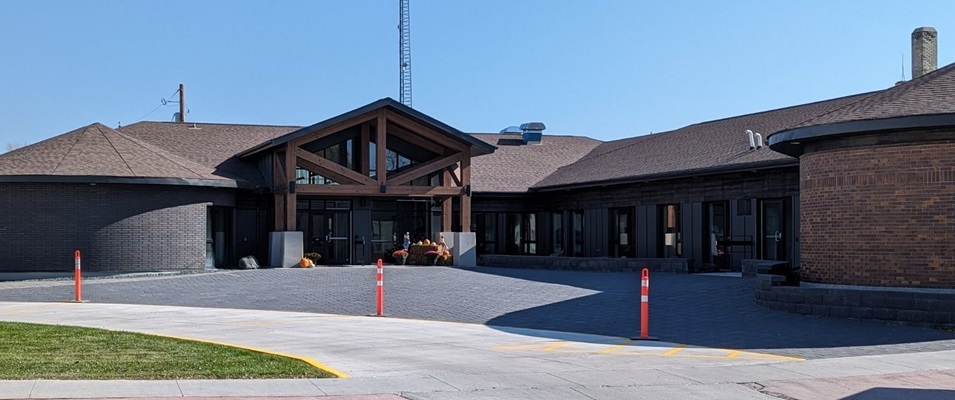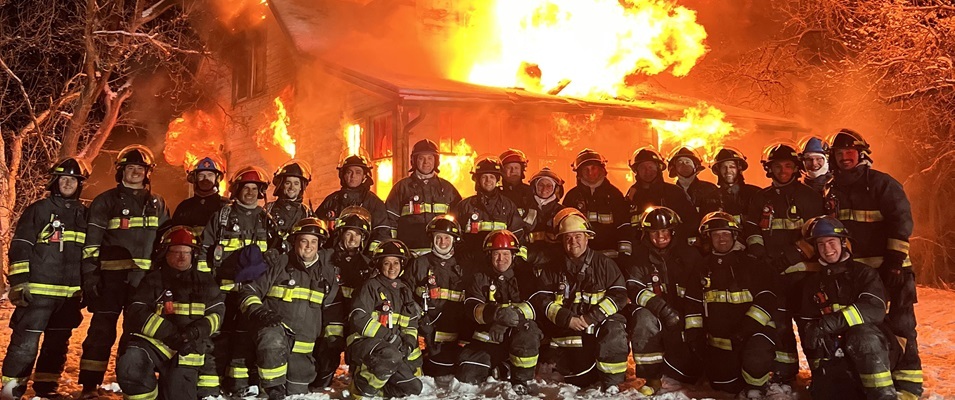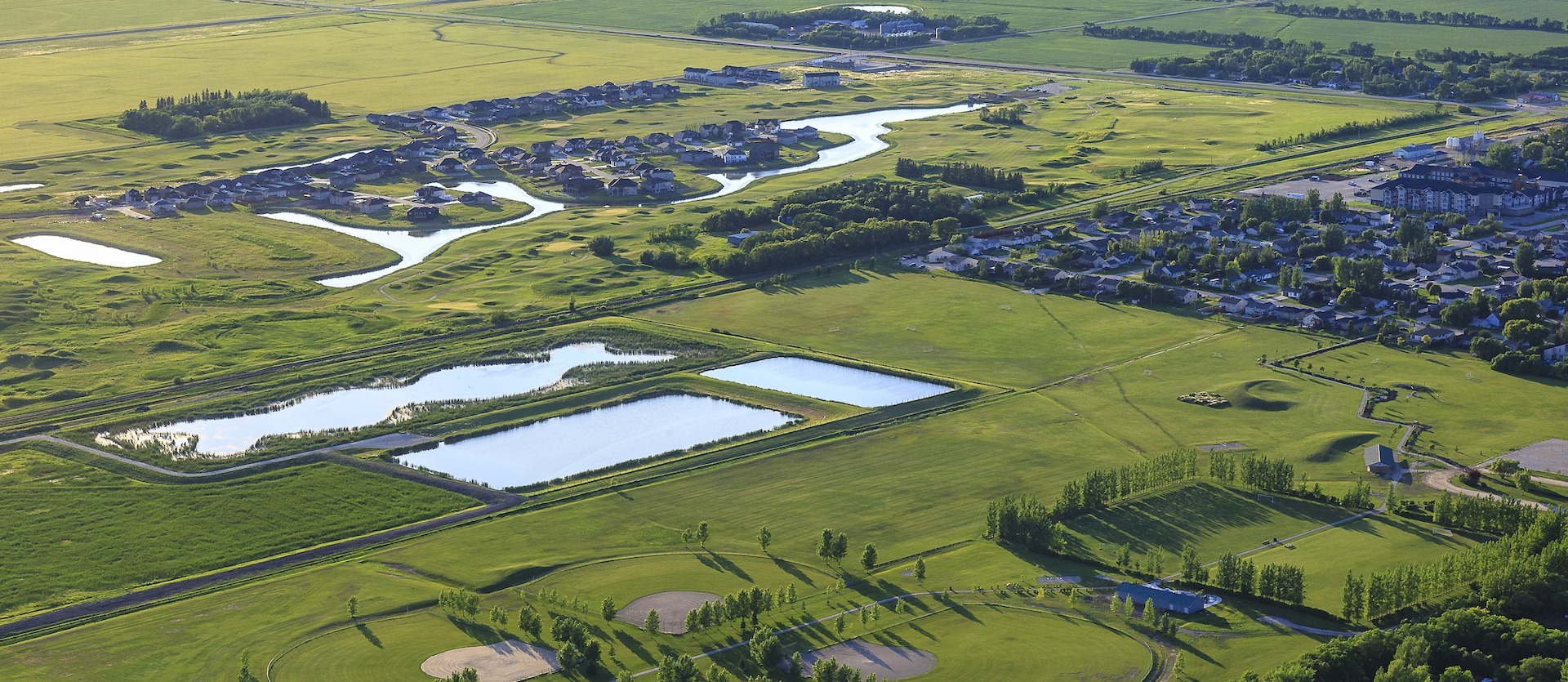
Back on June 22, New Bothwell residents past and present converged for a full day of festivities to commemorate the community’s one hundredth year. A small event committee treated the crowd of about 400 to a memorable day which began with a pancake breakfast and concluded with one of the best fireworks displays ever to be seen over the town.
Edna Vogt says planning the event was a big undertaking… one that resulted in many smiles and memories shared.
The community supper, prepared by a group of local women, required the hand-pressing of hundreds of cottage cheese and potato perogies as well as the slaughtering of a pig for the farmer sausage barbecue. In keeping with the community’s Mennonite roots, the dinner was served with heaps of schmaunt fat (cream gravy), corn, and coleslaw.
Throughout the day, attendees were kept busy with a paint party, baseball games, a beanbag toss, entertainment by Five Acres, and the comedy of Big Daddy Tazz. Kids horsed around on inflatable games or joined in on a community-wide scavenger hunt in search of a cash prize.
Of the four main committee members, Vogt says she and Irma Friesen were also on the seventy-fifth anniversary committee 25 years ago.
“We have a video from our seventy-fifth… and we had that going all day,” Vogt says. “That’s the best thing we could have done. You should have seen the people watching that. It was 120 minutes and some just sat fascinated because there were so many people [at this event that were also at that one]… It’s just amazing to see how, in 25 years, people had changed.”
At midday, the committee also unveiled an 80-foot mural which they’d commissioned from renowned artist Mandy van Leeuwen of Winnipeg. The mural runs along the length of the community’s recreation building and depicts many facets of New Bothwell’s 100-year history.
A special ribbon-cutting ceremony was held at the mural. Carol Tesluk and 94-year-old Helen Kehler, New Bothwell’s oldest living resident, were asked to cut the ribbon. Chantelle Dueck received a Volunteer of the Year award.
“On our seventy-fifth [anniversary], we did a humongous [affair],” says Vogt. “We had a homecoming reunion on the August long weekend and we sent out 1,500 letters to former students. We went very small scale this time. You just don’t seem to have the volunteers you used to have. We wanted just a one-day [event] but also kind of special.”
Gateway to the East Reserve
While 100 years is certainly cause for celebration, the marker used for the community’s anniversary is actually that of the beginnings of the Bothwell School District.
In 1919, a one-room schoolhouse was built near what was once known as Kronsthal, a small farming community half a mile west of the site New Bothwell sits on today. Kronsthal directly translates in Low German to “Crown Valley.” The farmsteads were intersected by a major route to the city known to the locals as the Winnipeg Road. One of those farmsteads is still there today.
Story has it that in 1877, Lord Dufferin, his wife Harriot, the Countess of Dufferin, and their daughter Nellie paid a visit by horse and carriage to Kronsthal. William Hespeler and a delegation of four horsemen from the area greeted the regal party at an arch that had been created by the locals with pine boughs and a sign that read “Mennonite Reserve.” The delegation led Lord Dufferin and his family through to their final destination. From that time, Kronsthal was considered by many to be the Gateway to the East Reserve.
By 1919, children of the Kronsthal area were able to attend school at the newly erected Bothwell School.
In 1936, the Bothwell Cheese factory was built across from the schoolhouse by two local gentlemen looking for a way to use up their excess milk. Shortly after, Vogt’s parents, Peter and Elizabeth Hiebert, built a store near the cheese factory, and this is where Vogt spent her formative years. Milk was delivered in cans and doled out to shoppers. One-hundred-pound bags of flour were stored in a shed nearby.
Kronsthal extended to include homes that came up around the school and businesses. Vogt’s father created a small makeshift post office in his store and made regular trips to Niverville to collect and sort the mail belonging to Kronsthal residents.
Eventually, the government agreed to allow for postal service direct to the area but requested a different name for the community. Locals decided to assume the name of the school, but there was already a community called Bothwell in Ontario.
“The imagination didn’t go very far,” laughs Vogt. “So they said, ‘Then let’s call it New Bothwell.’ So that’s how it came to be.”
Vogt herself is a fourth-generation New Bothweller. Her children, grandchildren, and great-grandchildren also attended school here. Her memories of New Bothwell as a child are still clear. One of her favourite childhood memories includes visiting the nearby cheese factory and filling small paper bags with fresh cheese curds right out of the vat. This was their candy.
“We grew up on cheese curds,” she says fondly.
The small schoolhouse eventually burned to the ground in 1944. The children resumed school in a machine shed nearby until a new four-room school was built. In the 1960s, while the province was shutting down schools and amalgamating school districts, the New Bothwell Chamber of Commerce went straight to Ed Schreyer, provincial NDP leader, for a promise to let them keep the school in New Bothwell. A new school was built and, today, around 200 children attend from Kindergarten to Grade Eight.
New Bothwell made more progress in the 1960s, including paving the main streets and bringing hydro electricity to all homes.
But there’s no question in Vogt’s mind that the community’s growth has stemmed largely from the cheese factory. She laughs at a story she once heard about a St. Pierre gentleman who was vacationing in Texas. When asked by a local Texan where he was from, the Texan had never heard of St. Pierre, but he queried whether it was close to New Bothwell.
Vogt still feels an intense sense of pride in her small community of about 600.
“When you [acknowledge] that your great grandparents began homesteading here,” she says, “that means your roots are pretty deep.”




















